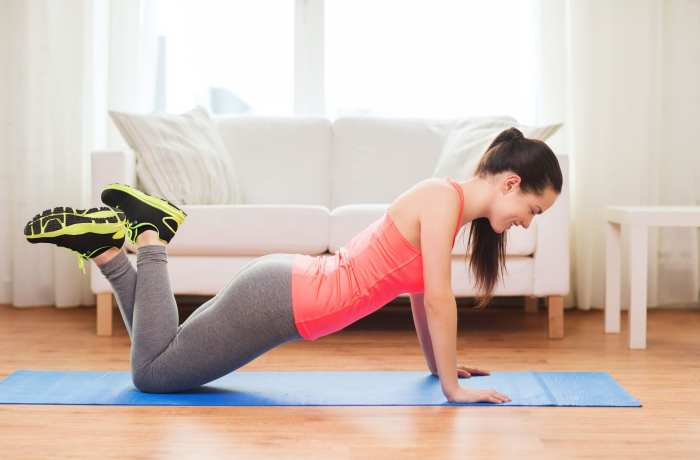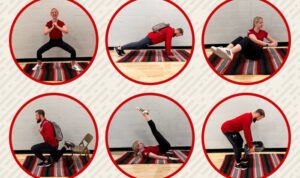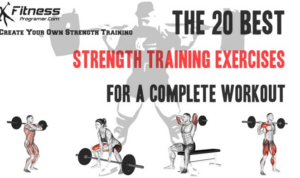Cardio exercises are more than just a workout – they’re a gateway to better health, improved fitness, and a happier you. From the benefits to the techniques, get ready to dive into the world of cardio like never before.
Benefits of Cardio Exercises

Cardio exercises offer a wide range of benefits for overall health and well-being. These exercises are essential for improving cardiovascular health, managing weight, and boosting mood while reducing stress levels.
Improved Cardiovascular Health
- Cardio exercises help strengthen the heart muscle, improving its efficiency in pumping blood throughout the body.
- Regular cardio workouts can lower blood pressure and reduce the risk of heart disease, stroke, and other cardiovascular conditions.
- Increased circulation and oxygen delivery to the body’s tissues contribute to better overall cardiovascular health.
Weight Management
- Engaging in cardio exercises can help burn calories and promote weight loss when combined with a balanced diet.
- High-intensity cardio workouts like running, cycling, or HIIT can accelerate metabolism, aiding in weight management efforts.
- Consistent cardio exercise can also help maintain a healthy weight and prevent obesity-related health problems.
Mood Enhancement and Stress Reduction
- Cardio workouts trigger the release of endorphins, often referred to as “feel-good” hormones, which can elevate mood and reduce feelings of anxiety and depression.
- Regular physical activity through cardio exercises can act as a natural stress reliever, promoting mental well-being and overall relaxation.
- Improved sleep quality and cognitive function are additional benefits of cardio exercises in managing stress levels and enhancing mood.
Types of Cardio Exercises
Cardio exercises come in various forms, each offering unique benefits and targeting different muscle groups. It’s essential to choose the right type of cardio exercise based on your fitness goals and preferences.
Running
Running is a popular form of cardio exercise that can be done indoors on a treadmill or outdoors. It is a high-intensity workout that primarily targets the lower body muscles, including the calves, hamstrings, and quadriceps.
Cycling
Cycling is another effective cardio exercise that can be done on a stationary bike or outdoors. It is a low-impact workout that mainly targets the leg muscles, such as the quadriceps, hamstrings, and glutes. Cycling can be adjusted to different intensity levels to suit various fitness levels.
Swimming
Swimming is a full-body cardio exercise that works multiple muscle groups simultaneously. It is a low-impact workout that is gentle on the joints and is suitable for all fitness levels. Swimming engages the muscles in the arms, legs, core, and back, providing an excellent cardiovascular workout.
Dancing, Cardio exercises
Dancing is a fun and engaging cardio exercise that can be done in various styles, such as Zumba, salsa, or hip-hop. It not only improves cardiovascular health but also enhances coordination and flexibility. Dancing targets a wide range of muscle groups, depending on the dance style, making it a versatile workout option.
Cardio Exercise Techniques

Proper techniques are essential when performing cardio exercises to maximize their effectiveness and prevent injuries. It is crucial to maintain correct posture and breathing throughout your workout to ensure you get the most out of your routine.
Running
When running, make sure to keep your back straight, shoulders relaxed, and arms bent at a 90-degree angle. Land on the middle of your foot and push off with your toes to propel yourself forward. Remember to breathe deeply and steadily to oxygenate your muscles properly.
Cycling
For cycling, adjust your seat height so that your knee is slightly bent at the bottom of the pedal stroke. Keep your back straight, shoulders relaxed, and grip the handlebars lightly. Focus on pedaling smoothly and evenly, engaging your core muscles for stability.
Jumping Rope
When jumping rope, maintain a slight bend in your knees and land softly on the balls of your feet. Keep your elbows close to your sides and wrists relaxed. Coordinate your breathing with each jump, exhaling as you exert force and inhaling during the recovery phase.
Swimming
In swimming, ensure proper body alignment by keeping your head in line with your spine and hips up near the surface of the water. Kick from your hips and engage your core for stability. Remember to breathe rhythmically by exhaling underwater and inhaling when your face is out of the water.
Increasing Intensity and Duration
To avoid injuries and improve endurance, gradually increase the intensity and duration of your cardio workouts. Start by adding a few minutes to your workout or increasing the resistance/speed slightly. Listen to your body and pay attention to any signs of fatigue or discomfort to prevent overexertion.
Incorporating Cardio Exercises into a Routine
To create a well-rounded workout plan that includes cardio exercises, it’s essential to mix different types of cardio workouts with strength training and rest days for optimal results. This balanced approach will help you improve cardiovascular health, build muscle, and prevent overtraining.
Combining Cardio with Strength Training
When incorporating cardio into your routine, consider combining it with strength training exercises. This combination can help you burn more calories, increase muscle mass, and boost metabolism. For example, you can alternate between cardio sessions like running or cycling with strength training exercises such as squats, lunges, and push-ups. This way, you can work on both your cardiovascular endurance and muscle strength effectively.
Importance of Rest Days and Preventing Overtraining
Rest days are crucial when incorporating cardio exercises into your fitness routine. Overtraining can lead to fatigue, injuries, and decreased performance. To prevent overtraining, make sure to schedule rest days in between your workout sessions. Listen to your body and take breaks when needed. It’s also important to vary the intensity and duration of your cardio workouts to avoid overtraining. Remember, rest is essential for muscle recovery and overall performance improvement.


